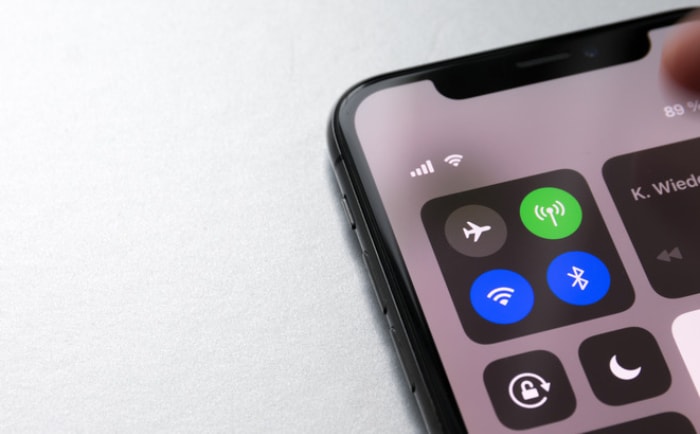How to Fix Wi-Fi Not Working: Easy Fixes for Common Problems

Losing your Wi-Fi connection is a uniquely modern frustration that can bring your entire day to a halt. One moment you are streaming, working, or browsing, and the next you are completely cut off.
Getting back online is the top priority, but randomly trying fixes can be a waste of time. This guide offers a structured approach to solving your connection problems efficiently.
Quick Fixes for a Lost Connection
Before diving into complex diagnostics, a few simple steps can often resolve a dropped connection. These solutions address the most frequent temporary glitches that affect devices and network hardware.
Performing them requires no special tools or technical expertise and can get you back online in just a few minutes.
Restart Your Device and Wi-Fi
The classic advice to turn something off and on again is effective for a reason. Restarting your device clears temporary software bugs and resets its network components.
Toggling your Wi-Fi or using Airplane Mode forces your device to sever all wireless connections and re-establish them from a clean slate.
- Open your device's settings or control panel and locate the Wi-Fi icon. Turn it off, wait about ten seconds, and turn it back on.
- Alternatively, find the Airplane Mode setting. Turn it on, wait ten seconds, and then turn it off.
- If the connection issue persists, perform a full restart of your computer, smartphone, or tablet.
Power-Cycle Your Modem and Router
Your modem and router work constantly to manage your internet traffic, and they can benefit from a periodic refresh. This process, known as a power-cycle, clears their internal memory and can fix issues with freezing or poor performance.
- Unplug the power cords from both your modem and your router.
- Wait for at least 60 seconds to ensure they have fully powered down and reset.
- Plug the modem's power cord back in. Wait for its status lights (often labeled “Online,” “Internet,” or with a globe icon) to become solid and stable, which usually takes a couple of minutes.
- Once the modem is fully online, plug the router's power cord back in and allow it a few minutes to boot up completely.
Forget and Rejoin the Network
Sometimes the problem lies with the saved connection profile on your computer or phone. This profile, which includes the network password and other settings, can become corrupted.
Forgetting the network forces your device to establish a new, clean connection.
- Go to the Wi-Fi settings menu on your device.
- Find the list of saved or known networks.
- Select your home network from the list and choose the option to “Forget,” “Remove,” or “Delete” it.
- Scan for available Wi-Fi networks again.
- Select your network and enter the password when prompted to reconnect.
Find the Source of the Fault

If the quick fixes did not restore your connection, the next step is to determine the origin of the problem. A systematic process of elimination can tell you if the fault lies with a single device, your local Wi-Fi network, or your internet service provider.
Isolate the Problem with Other Devices
A simple way to narrow down the cause is by using other devices to see if the problem is widespread or isolated. This helps you determine if the fault is with one device or your entire network.
- Grab another Wi-Fi-enabled device, like a different laptop or a smartphone.
- Attempt to connect it to the same Wi-Fi network. If it connects successfully, the problem is most likely with your original device.
- If the second device also fails to connect, the issue is likely with your router or internet service.
- As a final check, try connecting the original problematic device to a different Wi-Fi network, such as your phone's mobile hotspot. If it connects, this confirms the problem is with your home network.
Test the Internet Connection Directly
To distinguish between a Wi-Fi problem and an internet service problem, you need to bypass the wireless signal with a physical connection.
- Find an Ethernet cable and a computer with an Ethernet port.
- Plug one end of the cable into a LAN port on the back of your router. These are usually numbered.
- Plug the other end into your computer’s Ethernet port.
- Turn off Wi-Fi on the computer to ensure it's using the wired connection and try to browse the web. If it works, your internet service is fine, and the problem is with your Wi-Fi. If it fails, the issue is likely with your modem or ISP.
Check for Internet Service Outages
Before you spend more time troubleshooting your own equipment, it is wise to check if the problem is external. Your internet service provider (ISP) may be experiencing a local or regional outage.
- Using a smartphone with cellular data, open a web browser.
- Navigate to your ISP's official website or their support page on a social media platform like X (formerly Twitter).
- Look for a “Network Status,” “Service Status,” or “Outage Map” page.
- Check for any reported disruptions in your area. This can save you from performing unnecessary fixes on your end.
Device-Side Remedies
If you have confirmed the issue is isolated to a single device, you can focus on its specific settings and software. Problems on a phone, laptop, or tablet often stem from misconfigured settings, outdated software, or conflicts with other applications.
Check Basic Wireless and Range Settings
It is easy to accidentally change a setting that disables your connection. Start by confirming the most fundamental requirements for wireless access.
- Navigate to your device's settings and verify that the Wi-Fi toggle is in the “on” position.
- Confirm that Airplane Mode is turned off. When enabled, it disables all wireless radios, including Wi-Fi.
- Move your device closer to the Wi-Fi router. If the connection works when you are nearby, the problem is likely related to signal strength or interference, not a device fault.
Update Software and Run Diagnostics
Outdated software is a common source of connectivity problems. Updates for your operating system and network adapter drivers often include important bug fixes that can resolve compatibility issues.
- Check for and install any available updates for your device's operating system (e.g., Windows Update, macOS System Settings, Android/iOS updates). Restart the device after updating.
- Use the built-in network troubleshooter. On Windows, search for “Troubleshoot network” in the Start Menu. On macOS, use the Wireless Diagnostics tool.
- As a more advanced step, find the “Network Reset” option in your device's settings. This will remove and reinstall all network adapters and reset networking components to their defaults. You will need to re-enter your Wi-Fi password afterward.
Tweak Advanced Network Settings
Several advanced settings and software conflicts can interfere with a stable connection. These steps involve adjusting deeper system settings to resolve persistent problems.
- Check the power management settings for your network adapter (primarily on laptops). Find the adapter in Device Manager (Windows) or System Information (macOS) and disable any setting that allows the computer to turn it off to save power.
- Renew your device's IP address and flush its DNS cache. On Windows, open Command Prompt as an administrator and run the commands ipconfig /release, ipconfig /renew, and ipconfig /flushdns. On macOS, these options are in the Advanced section of your Wi-Fi network settings.
- Temporarily disable any VPN, firewall, or third-party antivirus software. If the connection immediately returns, you have identified a software conflict and may need to adjust that application's settings.
Optimizing Your Router and Wi-Fi Setup

If your internet service is active and the issue is not tied to a single device, the problem likely resides within your Wi-Fi network itself. Your router's physical placement, its settings, and its software all play a critical role in providing a stable connection.
Improve Signal Strength and Reduce Interference
The physical environment around your router has a major impact on signal quality. By optimizing its position and wireless settings, you can significantly boost performance and reliability.
- Position your router in a central, open area of your home, preferably elevated on a shelf or desk rather than on the floor.
- Move the router away from physical obstructions like thick concrete walls, large metal furniture, and appliances known for interference, such as microwave ovens.
- Use a Wi-Fi analyzer app on your phone to identify which wireless channels are most congested in your area. Log into your router's settings and manually switch to a less crowded channel.
- Experiment with the 2.4 GHz and 5 GHz frequency bands. Connect devices closer to the router to the 5 GHz band for faster speeds, and use the 2.4 GHz band for devices farther away, as it offers better range.
Update Firmware and Verify Core Settings
Router manufacturers regularly release firmware updates to patch security vulnerabilities, fix bugs, and improve performance. Keeping your router's software current is a crucial step, as is verifying its basic configuration.
- Access your router’s administrative interface by typing its IP address (often 192.168.1.1 or 192.168.0.1) into a web browser.
- Log in using the administrator username and password. If you have not changed it, the default credential may be printed on the router's label.
- Locate the “Firmware Update” or “Router Update” section and follow the instructions to install the latest version if one is available.
- Navigate to the wireless settings to confirm your network name (SSID) and password are correct.
- Check the security settings and ensure your encryption method is set to WPA2 or, for better security, WPA3.
- Find the network or LAN settings and confirm that the DHCP server is enabled, which allows the router to automatically assign IP addresses to your devices.
Perform a Factory Reset
When all other router troubleshooting has failed, a factory reset is the final option. This will erase all your custom configurations, including your Wi-Fi name and password, returning the router to its original state.
- With the router powered on, locate the recessed “Reset” button, usually on the back or bottom of the device.
- Use a paperclip or a similar small object to press and hold the button for about 30 seconds, until the router's lights flash or change color, indicating a reset.
- Release the button and allow the router several minutes to restart and restore its factory settings.
- Connect to the router (often with an Ethernet cable) and log into the administrative interface using the default credentials.
- Follow the setup wizard to reconfigure your network, including setting a new, strong password for your Wi-Fi.
- Crucially, change the default administrator password for the router itself to secure it from unauthorized access.
Addressing Special Cases
Sometimes Wi-Fi issues are not about a complete lack of connection but present themselves in more specific ways. A device might connect to the Wi-Fi but have no internet access, the signal may be frustratingly slow, or a network might not appear at all.
Connected to Wi-Fi but No Internet
One of the most common issues is seeing a full-strength Wi-Fi symbol on your device, yet being unable to load any websites. This usually indicates that your device is talking to the router, but the router is not successfully connecting to the wider internet.
- Check for a Captive Portal: If you are on a public network (like at a hotel or café), open a web browser and try to navigate to a simple, non-secure website like http://example.com. This often triggers a login or terms-of-service page that you must complete before gaining full internet access.
- Change Your DNS Provider: Your device uses a Domain Name System (DNS) to translate website names into IP addresses. If your ISP's DNS server is down, your internet will appear broken. Try changing your device's or router's DNS settings to a public provider, such as Google (8.8.8.8) or Cloudflare (1.1.1.1), to see if that resolves the issue.
- Renew Your IP Lease: Your device might have an invalid or expired IP address from the router. You can force it to get a new one by running ipconfig /release followed by ipconfig /renew in the Windows Command Prompt, or by using the “Renew DHCP Lease” button in macOS network settings.
Slow or Dropping Wi-Fi Connection
An unstable connection that frequently drops or runs at very slow speeds can be just as disruptive as no connection at all. This is often caused by network congestion, interference, or signal range limitations.
- Mitigate Interference and Congestion: Follow the steps from the previous section to place your router in a central location and switch to a less crowded Wi-Fi channel. This is the most effective way to address general slowness.
- Identify Bandwidth-Heavy Devices: A single device streaming 4K video or downloading large files can slow down the entire network. Check your router's administrative interface for a list of connected devices and their data usage. You can also enable Quality of Service (QoS) in your router settings to prioritize traffic for specific applications, like video conferencing or gaming.
- Extend Your Wi-Fi Coverage: If your connection drops when you move to certain parts of your home, the issue is signal range. A Wi-Fi extender can help by rebroadcasting the signal to cover dead zones. For a more robust solution, consider upgrading to a mesh Wi-Fi system, which uses multiple nodes to provide seamless coverage throughout your entire home.
Cannot See or Join a Wi-Fi Network
If your desired network does not appear in the list of available connections, or if it rejects your attempts to join even with the correct password, the problem is likely due to a specific security or compatibility setting.
- Verify the Network Is Not Hidden: Some networks are configured not to broadcast their name (SSID) as a security measure. In your router's wireless settings, ensure that “Enable SSID Broadcast” is checked. If the network is intentionally hidden, you will need to add it manually on your device using its exact name and security settings.
- Check for MAC Address Filtering: MAC filtering is a security feature that only allows pre-approved devices to join the network. Log into your router and check the wireless security settings for a “MAC Filter” list. If it is enabled, you must either add your device's MAC address to the list or disable the feature.
- Ensure Device Compatibility: An older device may not support modern security standards like WPA3 or the 5 GHz frequency band. If your network is set to use only these modern standards, older devices will not be able to see or connect to it. Check your router settings and consider enabling a compatibility mode, such as WPA2, or ensuring the 2.4 GHz band is active.
Conclusion
Knowing when to stop troubleshooting and escalate the issue is just as important as the fixes themselves. If you have tried connecting a computer directly to your router with an Ethernet cable and still have no internet, the problem is almost certainly with your provider.
In this scenario, or if all your devices suddenly fail to connect, your next step should be to contact your ISP. On the other hand, if connection problems persist on a single device or with your router even after performing software updates, network resets, and a full factory reset, it may be time to consider a hardware upgrade.
Aging routers and Wi-Fi adapters can fail over time, and replacing them is often the final and most effective solution.


